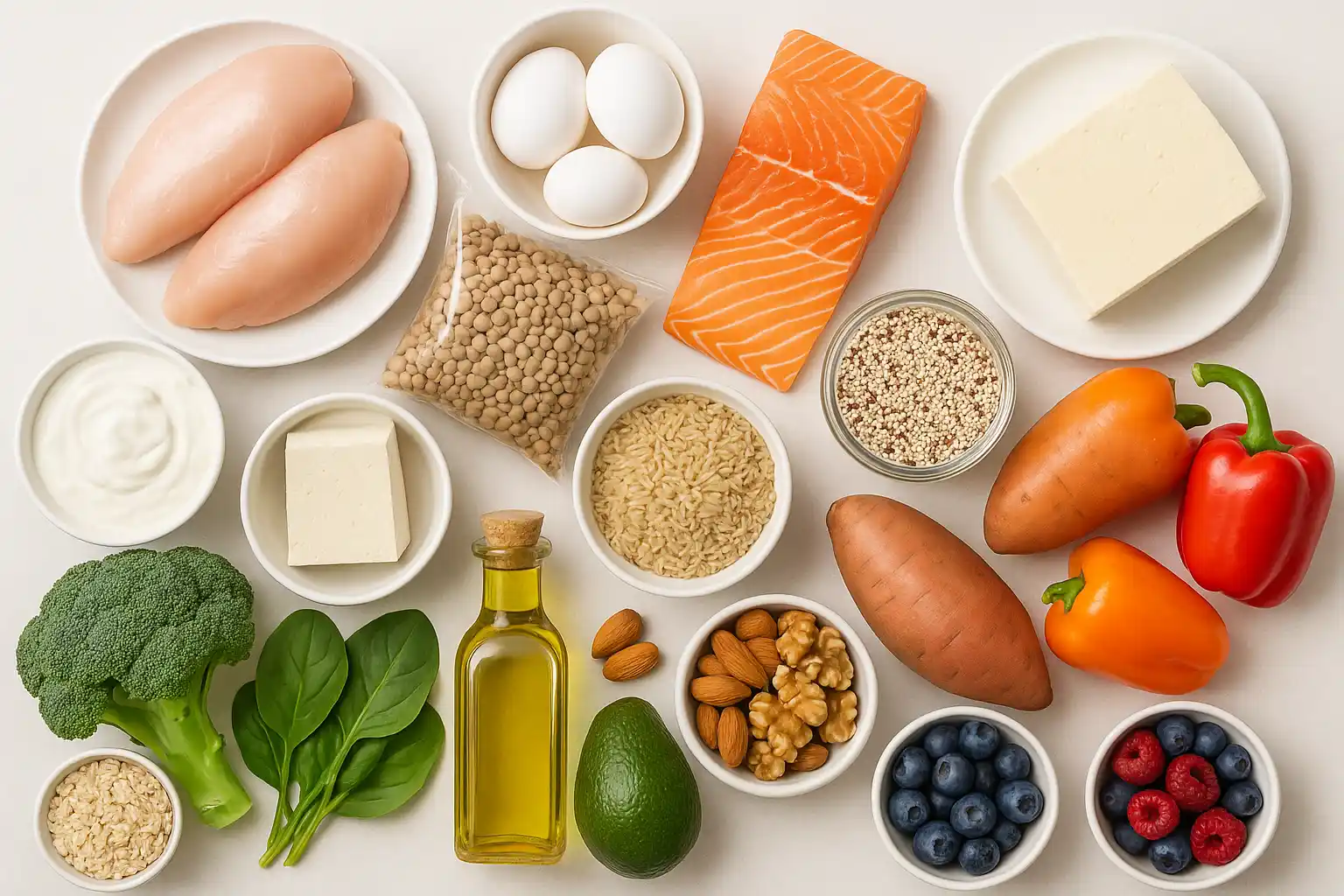Embarking on a journey of healthy eating and efficient meal preparation often begins long before you step into the kitchen – it starts at the grocery store. A well-crafted “high protein grocery list” is the cornerstone of successful meal prep, ensuring you have all the essential ingredients to fuel your body, support muscle growth, and maintain satiety throughout the week. Without a strategic shopping plan, it’s easy to get sidetracked by unhealthy temptations or forget crucial components, undermining your efforts before they even begin. This article will guide you through creating an intelligent and comprehensive high protein grocery list, focusing on cost-effective, versatile, and nutrient-dense options. We’ll help you navigate the aisles with purpose, making smart choices that streamline your high protein meal prep and contribute to your overall well-being. Think of this as your strategic playbook for nutrition, ensuring you’re always prepared, much like a basketball team meticulously scouting their opponents before a crucial Game 7, leaving no detail to chance.
Table of Contents
I. Why a Strategic High Protein Grocery List Matters
A thoughtful high protein grocery list is more than just a shopping aid; it’s a foundational element of a consistent and effective high protein meal prep routine. It helps you:
- Save Time: By planning your purchases, you reduce impulse buys and multiple trips to the store.
- Save Money: Focusing on essential, versatile ingredients and avoiding unnecessary items helps control your budget.
- Reduce Food Waste: Buying only what you need for your planned meals minimizes spoilage.
- Ensure Nutritional Goals Are Met: A targeted list ensures you consistently acquire the protein sources, complex carbohydrates, and healthy fats necessary for your dietary objectives [1].
- Stay Consistent with Meal Prep: Having the right ingredients on hand makes it easier to stick to your meal prep schedule. Furthermore, research indicates that meal planning and preparation are associated with healthier dietary patterns and reduced obesity risk [2].
II. Building Your Comprehensive High Protein Grocery List
This section breaks down the essential categories for your high protein grocery list, highlighting key items and considerations.
A. High Protein Grocery List: Lean Protein Sources – The Foundation
These are the stars of your high protein grocery list. Prioritize lean, high-quality options.
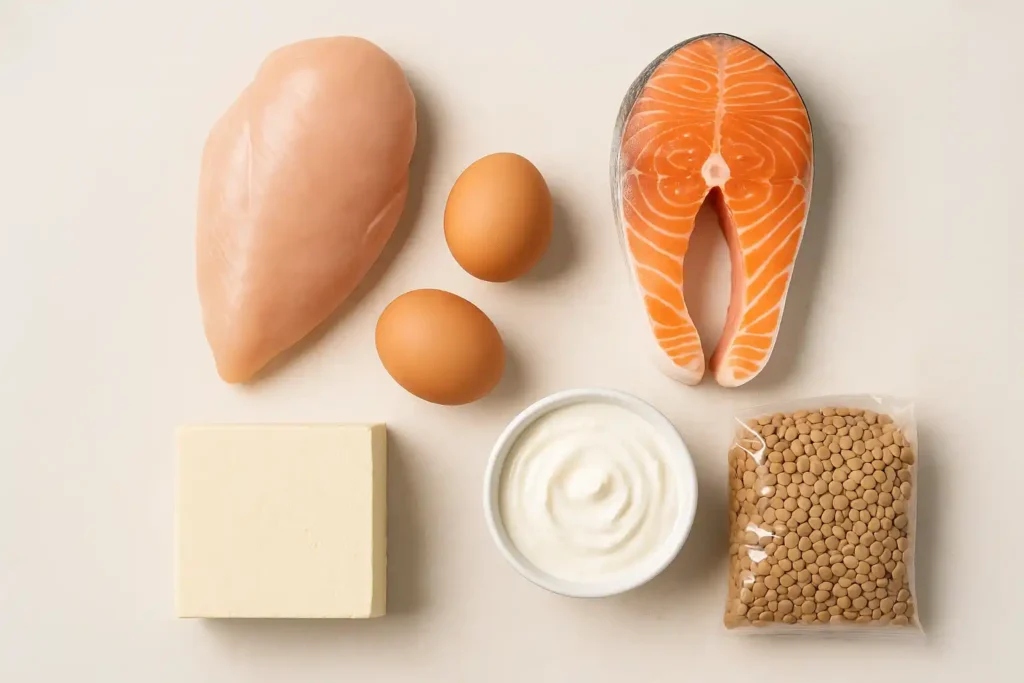
- Poultry: Chicken breast (boneless, skinless), turkey breast, ground turkey. Versatile and lean.
- Fish & Seafood: Salmon (rich in omega-3s), cod, tuna (canned in water), shrimp. Excellent for quick meals.
- Red Meat (Lean Cuts): Lean ground beef (90% lean or higher), sirloin, flank steak. Opt for grass-fed if budget allows.
- Eggs: A complete and economical protein source. Buy in bulk.
- Dairy & Alternatives: Greek yogurt (plain, unsweetened), cottage cheese, skyr, protein-fortified milk (dairy or plant-based). Great for snacks and breakfast.
- Plant-Based Proteins: Tofu (firm/extra-firm), tempeh, edamame, lentils (dried or canned), chickpeas (dried or canned), black beans, kidney beans. Essential for a diverse high protein grocery list.
- Protein Powder: Whey, casein, or plant-based (pea, rice, hemp). Useful for shakes, smoothies, or fortifying oats.
B. High Protein Grocery List: Complex Carbohydrates – Sustained Energy
These provide the energy needed for your workouts and daily activities, complementing your protein intake.
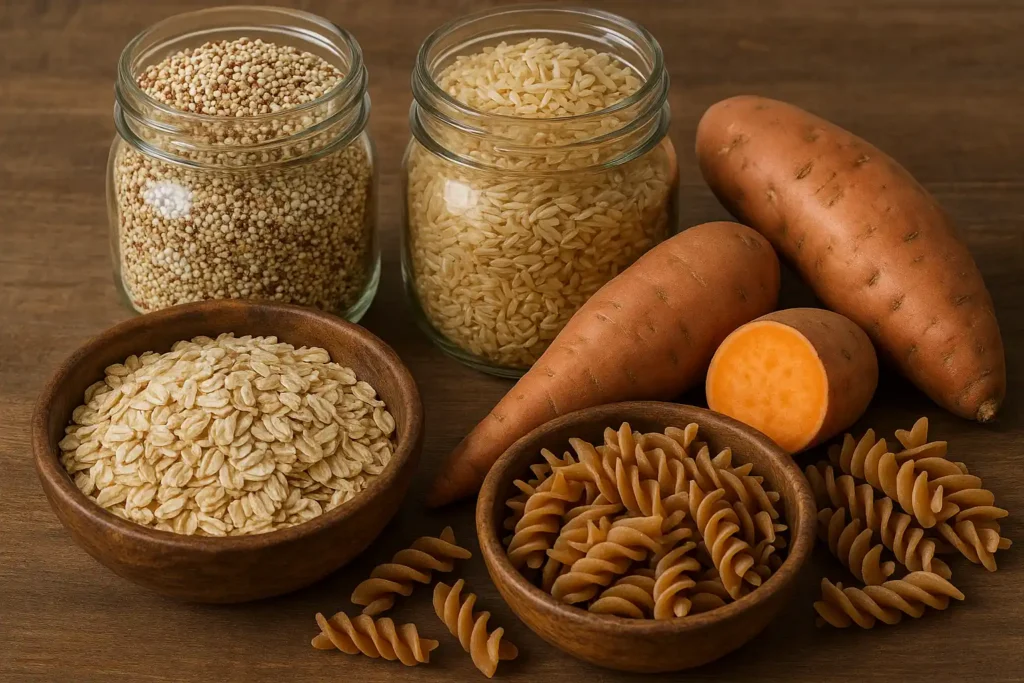
- Whole Grains: Quinoa, brown rice, oats (rolled or steel-cut), whole-wheat pasta, whole-grain bread/tortillas.
- Starchy Vegetables: Sweet potatoes, potatoes, butternut squash. Nutrient-dense and versatile.
C. High Protein Grocery List: Healthy Fats – Essential for Health
Crucial for hormone production, nutrient absorption, and satiety.
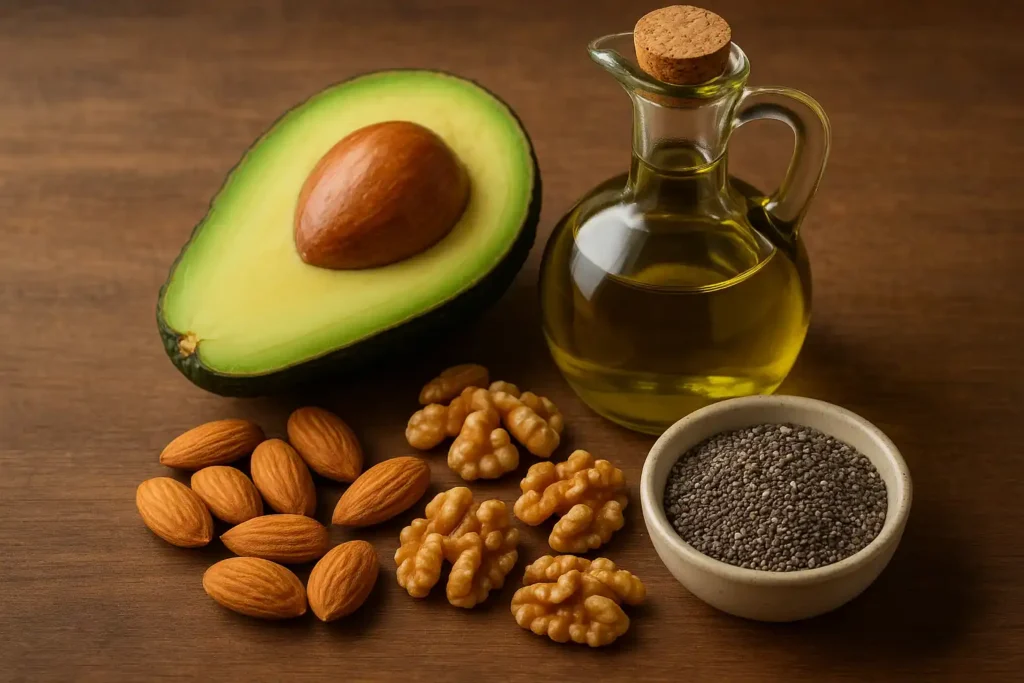
- Avocados: Fresh or frozen chunks.
- Nuts & Seeds: Almonds, walnuts, chia seeds, flax seeds, hemp seeds. Buy in bulk for cost savings.
- Oils: Extra virgin olive oil, coconut oil, avocado oil.
D. High Protein Grocery List: Vegetables & Fruits – Vitamins, Minerals, and Fiber
Load up on these for micronutrients and volume. Prioritize seasonal produce for freshness and cost-effectiveness.
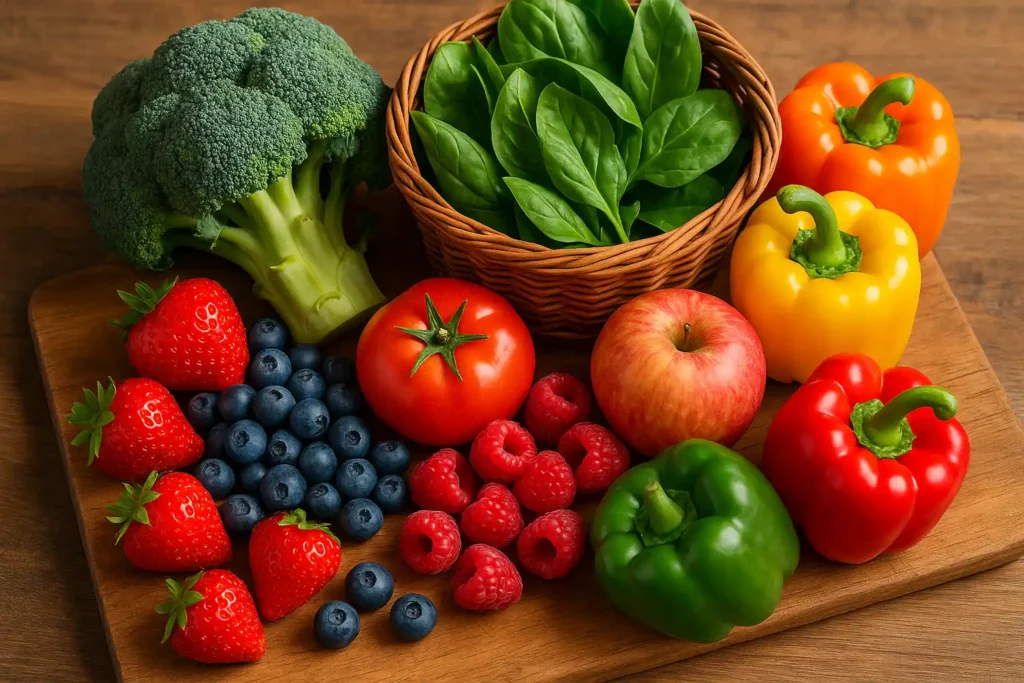
- Leafy Greens: Spinach, kale, mixed greens, romaine lettuce.
- Cruciferous Vegetables: Broccoli, cauliflower, Brussels sprouts.
- Other Vegetables: Bell peppers, zucchini, onions, garlic, mushrooms, carrots, celery.
- Berries: Blueberries, raspberries, strawberries (fresh or frozen). Low in sugar, high in antioxidants.
- Other Fruits: Apples, bananas, oranges, grapefruit.
E. High Protein Grocery List: Flavor Enhancers & Pantry Staples
These items elevate your meals and are crucial for variety.
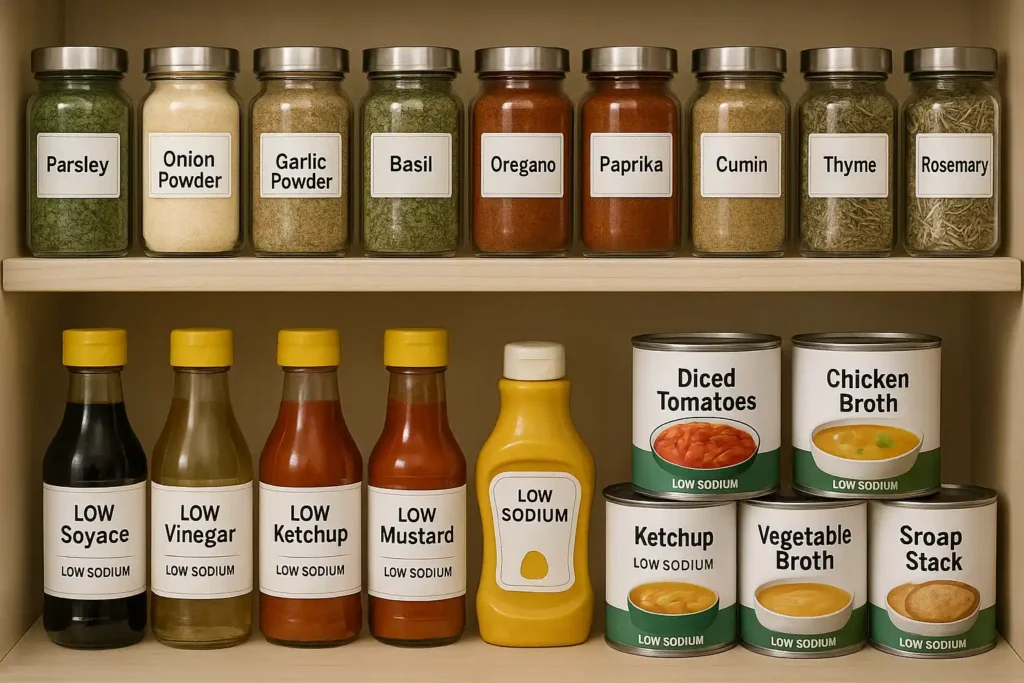
- Herbs & Spices: A wide variety of dried herbs and spices (cumin, paprika, chili powder, oregano, basil, garlic powder, onion powder).
- Condiments & Sauces: Low-sodium soy sauce/tamari, apple cider vinegar, hot sauce, mustard, sugar-free marinades.
- Broths: Low-sodium chicken, beef, or vegetable broth.
- Canned Goods: Diced tomatoes, tomato paste, coconut milk (light).
III. Featured Recipe: High Protein Chicken & Veggie Stir-Fry
This recipe is a perfect example of how to utilize items from your high protein grocery list to create a quick, healthy, and delicious meal prep option. It’s versatile and can be adapted with various vegetables and protein sources.
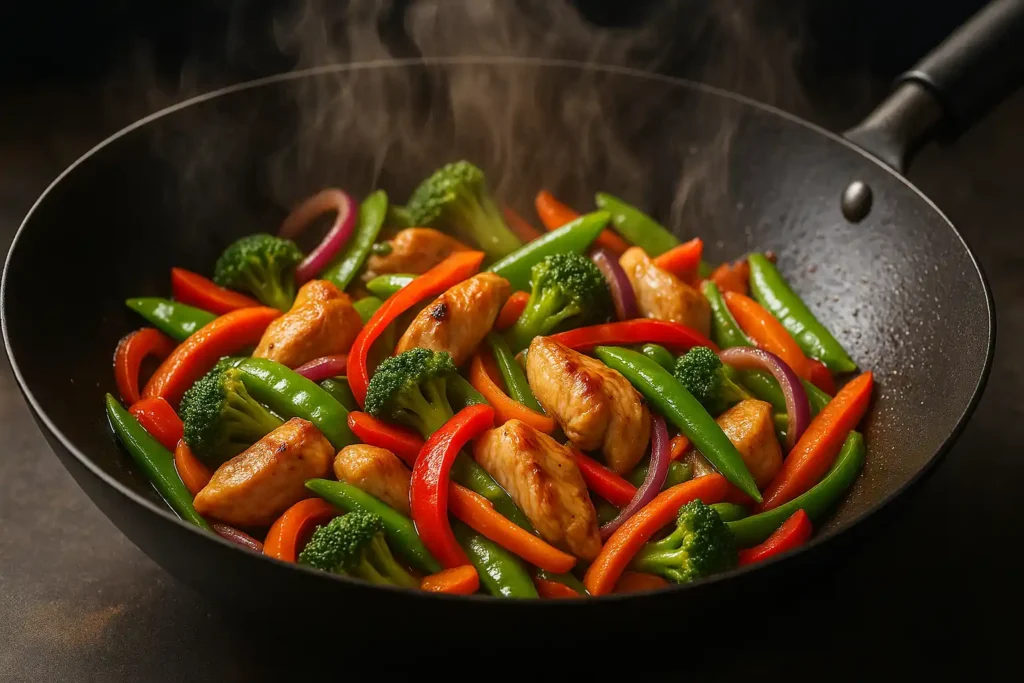
Ingredients:
- 1 lb boneless, skinless chicken breast, thinly sliced
- 1 tbsp sesame oil
- 1 large bell pepper (any color), thinly sliced
- 1 cup broccoli florets
- 1 cup snap peas
- 1/2 cup sliced carrots
- 2 cloves garlic, minced
- 1-inch piece fresh ginger, grated
- For the Stir-Fry Sauce:
- 1/4 cup low-sodium soy sauce or tamari
- 1 tbsp rice vinegar
- 1 tbsp honey or maple syrup (optional, for a touch of sweetness)
- 1 tsp cornstarch (or arrowroot powder)
- 1/4 cup water or vegetable broth
- Cooked brown rice or quinoa, for serving
- Optional: Sesame seeds for garnish
Instructions:
- Prepare Sauce: In a small bowl, whisk together all stir-fry sauce ingredients until well combined. Set aside.
- Cook Chicken: Heat sesame oil in a large skillet or wok over medium-high heat. Add sliced chicken and cook for 5-7 minutes, stirring occasionally, until cooked through and lightly browned. Remove chicken from the pan and set aside.
- Sauté Vegetables: Add bell pepper, broccoli, snap peas, and carrots to the same skillet. Stir-fry for 5-7 minutes until vegetables are tender-crisp. Add minced garlic and grated ginger during the last minute of cooking until fragrant.
- Combine & Sauce: Return the cooked chicken to the skillet with the vegetables. Give the stir-fry sauce a quick whisk again and pour it over the chicken and vegetables. Cook for 1-2 minutes, stirring constantly, until the sauce thickens and coats everything evenly.
- Serve & Store: Serve hot over cooked brown rice or quinoa. Garnish with sesame seeds if desired. Allow any leftovers to cool completely before portioning into meal prep containers. This recipe yields approximately 4 servings. Store in the refrigerator for up to 3-4 days.
IV. High Protein Grocery List: Summary Table
| Category | Key Items | Why They’re Essential for High Protein Meal Prep | Shopping Tips |
|---|---|---|---|
| Lean Proteins | Chicken breast, Salmon, Eggs, Tofu, Lentils | Muscle building, satiety, diverse amino acids | Buy in bulk, check sales, freeze portions |
| Complex Carbs | Quinoa, Brown Rice, Sweet Potatoes | Sustained energy, fiber, nutrient-dense | Buy dried grains, store root vegetables in cool, dark place |
| Healthy Fats | Avocados, Olive Oil, Nuts, Seeds | Hormone production, nutrient absorption, satiety | Buy in bulk (nuts/seeds), store oils in cool, dark place |
| Veggies & Fruits | Broccoli, Spinach, Berries, Bell Peppers | Vitamins, minerals, fiber, antioxidants | Prioritize seasonal, buy frozen for convenience |
| Pantry Staples | Spices, Low-sodium sauces, Broths | Flavor, versatility, reduce blandness | Stock up on sales, check expiration dates |
V. The Athlete’s Fueling Strategy: Precision Shopping for Peak Performance
Elite athletes, particularly those in high-demand sports like basketball, understand that their performance is directly linked to their nutrition. Their approach to grocery shopping is as strategic as their game plan. Imagine a professional basketball player, perhaps preparing for the intense physical demands of a Game 7 NBA Finals. Their high protein grocery list isn’t just a random collection of items; it’s a meticulously curated selection designed to provide precise macronutrient ratios for energy, recovery, and muscle maintenance. They prioritize lean proteins, specific complex carbohydrates, and healthy fats, often in exact quantities, to ensure their bodies are optimally fueled. This level of precision in acquiring ingredients directly translates to their ability to perform under pressure and recover rapidly. By adopting a similar disciplined approach to your own high protein grocery list, you can emulate this elite strategy, ensuring your body receives the best possible fuel to meet your daily challenges and achieve your personal bests.

Conclusion
Your “high protein grocery list” is a powerful tool in your arsenal for achieving health and fitness goals through effective meal prep. By systematically planning your purchases and focusing on nutrient-dense, versatile ingredients, you lay the groundwork for a week of delicious, satisfying, and protein-rich meals. Embrace the strategy of smart shopping, prioritize lean proteins, complex carbohydrates, and healthy fats, and remember the importance of variety and efficiency. Just as a well-prepared athlete steps onto the court with confidence, a well-stocked pantry and fridge, guided by a comprehensive high protein grocery list, will empower you to take control of your nutrition and thrive. Start building your ultimate high protein grocery list today and experience the transformative impact on your health and well-being!
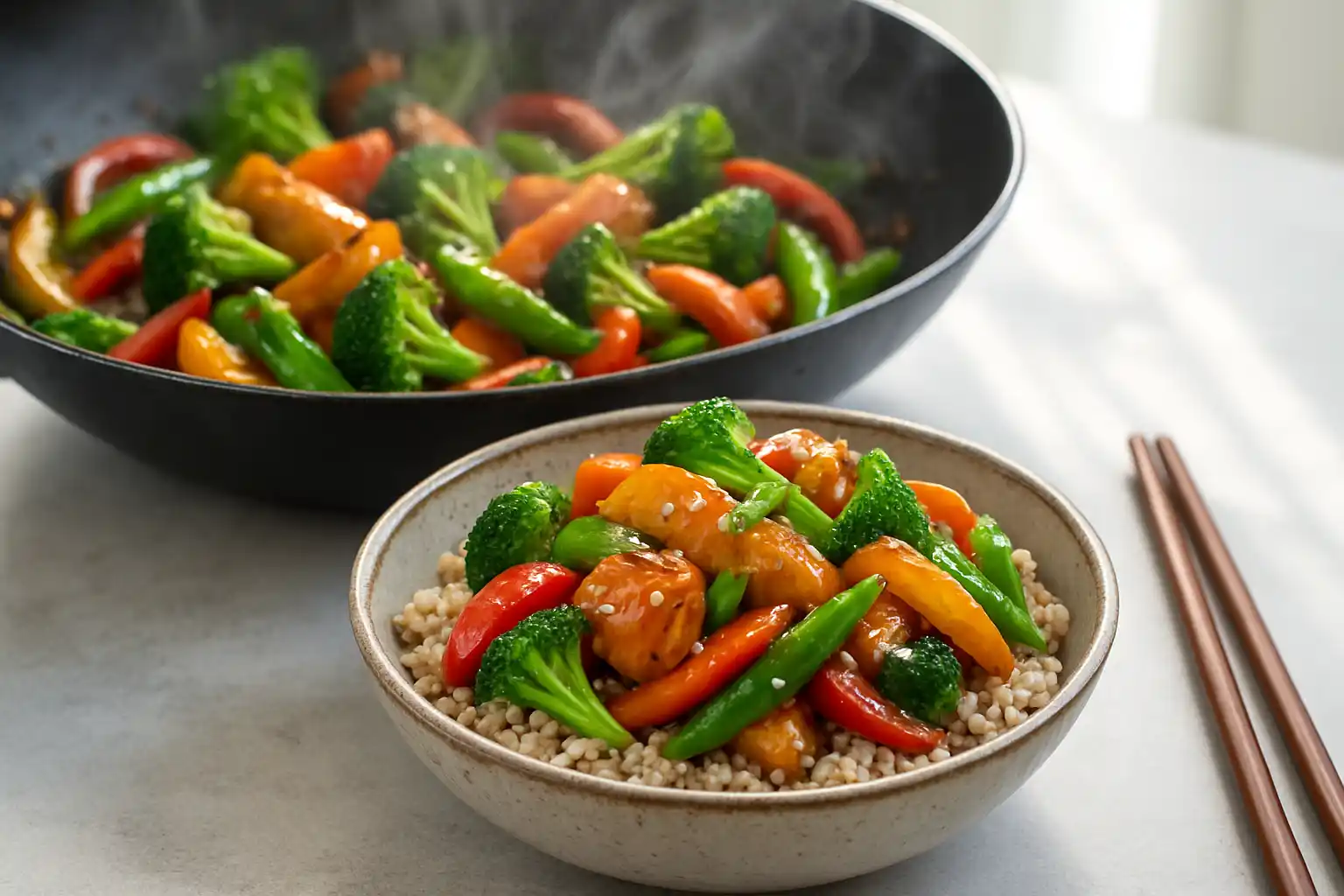
High Protein Chicken & Veggie Stir-Fry
Ingredients
Equipment
Method
- In a small bowl, whisk together all stir-fry sauce ingredients until well combined. Set aside.
- Heat sesame oil in a large skillet or wok over medium-high heat. Add sliced chicken and cook for 5-7 minutes, stirring occasionally, until cooked through and lightly browned. Remove chicken from the pan and set aside.
- Add bell pepper, broccoli, snap peas, and carrots to the same skillet. Stir-fry for 5-7 minutes until vegetables are tender-crisp. Add minced garlic and grated ginger during the last minute of cooking until fragrant.
- Return the cooked chicken to the skillet with the vegetables. Give the stir-fry sauce a quick whisk again and pour it over the chicken and vegetables. Cook for 1-2 minutes, stirring constantly, until the sauce thickens and coats everything evenly.
- Serve hot over cooked brown rice or quinoa. Garnish with sesame seeds if desired. Allow any leftovers to cool completely before portioning into meal prep containers. Store in the refrigerator for up to 3-4 days.
Notes
References
[1] MyPlate. (n.d.). Protein Foods. Retrieved from https://www.myplate.gov/eat-healthy/protein-foods
[2] Ducrot, P., Méjean, C., Aroumougame, V., Bellisle, F., Bertin, M., Caillot, P., … & Hercberg, S. (2017). Meal planning is associated with food variety, diet quality and a lower risk of obesity in a large sample of French adults. International Journal of Behavioral Nutrition and Physical Activity, 14(1), 12. Retrieved from https://ijbnpa.biomedcentral.com/articles/10.1186/s12966-017-0461-7
